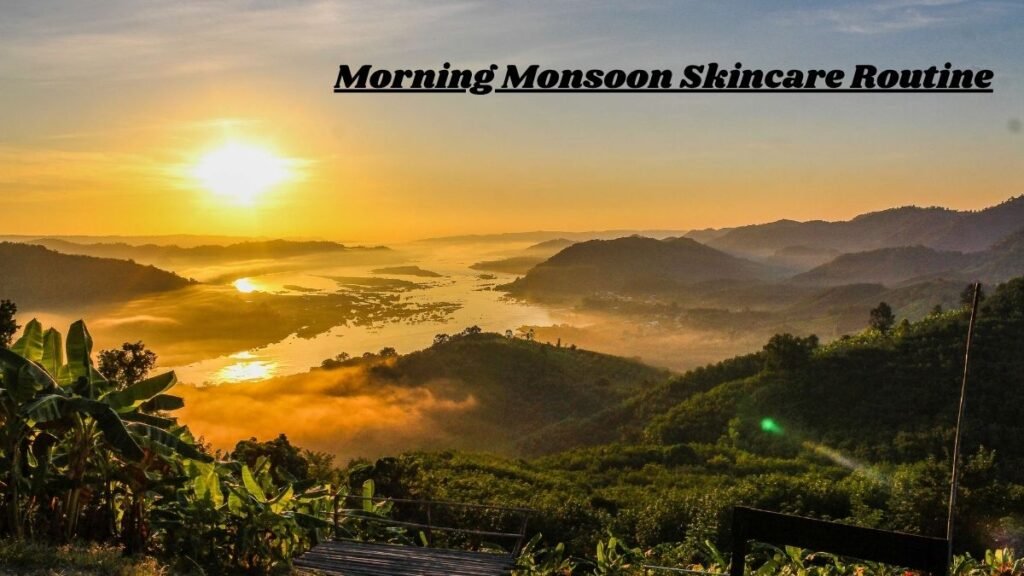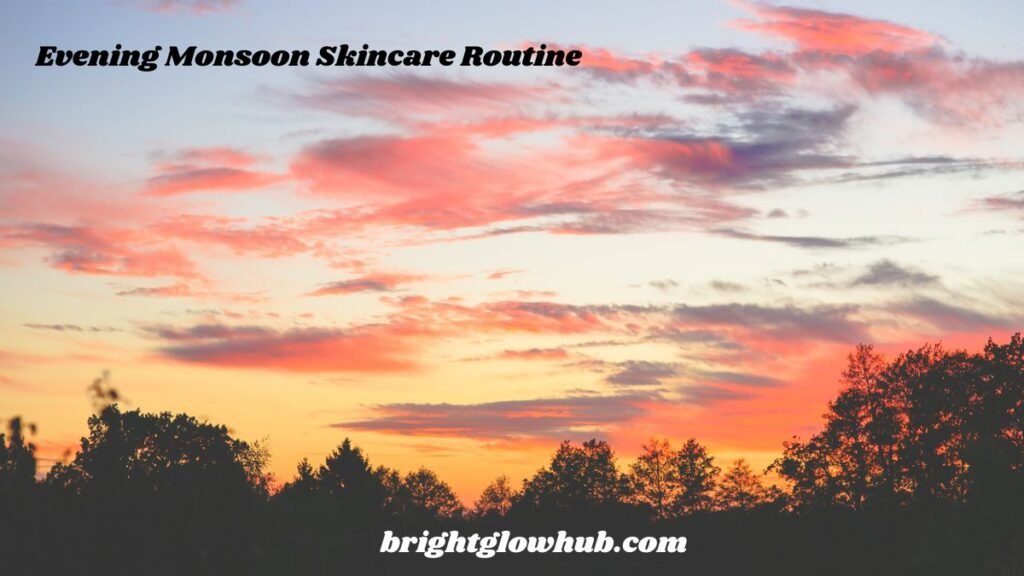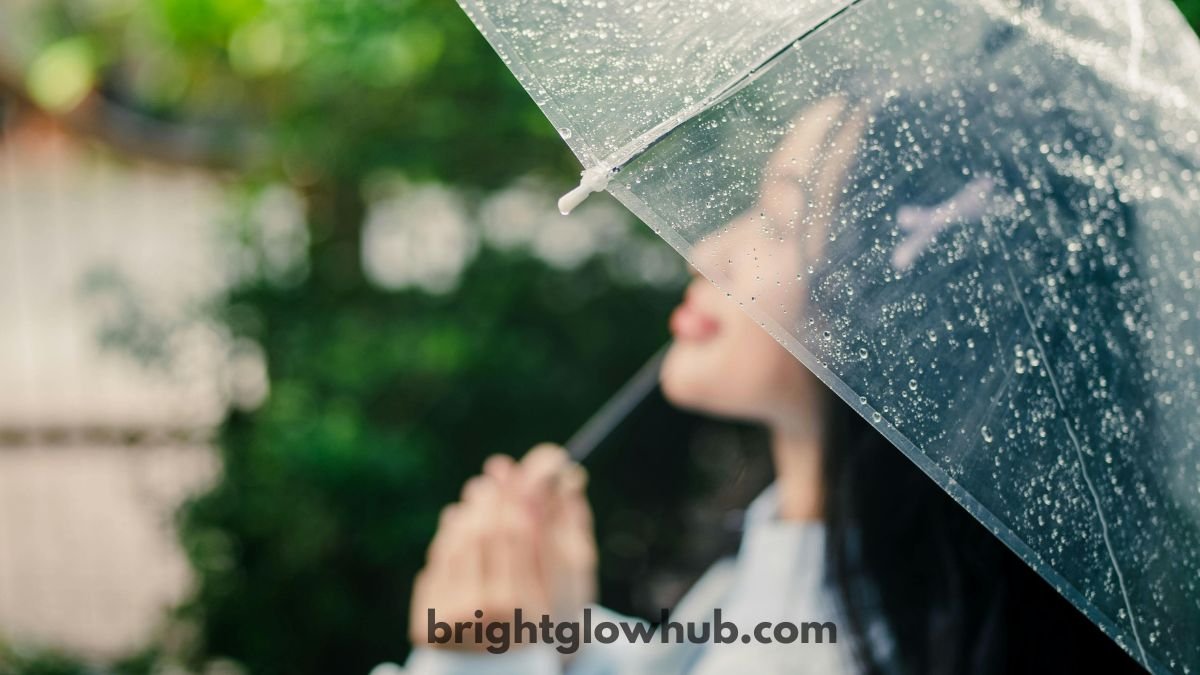Monsoon Skincare Routine for Acne-Prone Skin for better glow
The first drops of monsoon rain hit your window, and while everyone else is celebrating the end of summer’s scorching heat, you might be secretly dreading what’s coming. If you have acne-prone skin, you know the monsoon season can present some challenges. The humidity can shoot up, your T-zone may feel oilier by noon, and those pesky breakouts can seem more frequent.
Sound familiar? You’re definitely not alone. Many people across India struggle with skin changes during monsoon season, and there’s actual science behind why skin can behave differently when the rains arrive.
But here’s some encouraging news: with a few adjustments to your skincare routine, many people find they can enjoy the rainy season without constantly worrying about their complexion. Let’s explore some general suggestions in Monsoon Skincare Routine for Acne-Prone Skin for keeping your skin comfortable through those humid months.
⚠️ IMPORTANT DISCLAIMER: We are not dermatologists or skincare professionals. This article provides general skincare routine suggestions for informational purposes only. Individual results vary greatly. For persistent acne or skin concerns, always consult a board-certified dermatologist for personalized treatment and advice. Do not rely solely on skincare routines for medical conditions.
Why Skin Can React During Monsoon Season
Before we jump into suggestions, let’s understand why monsoon conditions can be challenging for some skin types. During the rainy season, humidity levels in many Indian cities can become very high. This creates a unique environment for the skin:
- Potential for Increased Oil Production: High humidity may affect how much oil your skin produces. For some with acne-prone skin, this can sometimes contribute to clogged pores.
- Bacterial Growth: Warm, moist conditions are often a breeding ground for bacteria. The same humidity that makes the air feel damp can create an environment where acne-causing bacteria may thrive.
- Sweat and Dirt Buildup: Even though it’s cooler, you might still sweat, and it may not evaporate as quickly. This can sometimes mix with pollution and dead skin cells.
- Product Absorption: Heavy, humid air can sometimes prevent skincare products from absorbing as they normally would.
Suggested Morning Monsoon Skincare Routine for Acne-Prone Skin

Step 1: Gentle Cleansing
Many people find starting the day with a gentle, water-based cleanser helpful. Some individuals with acne-prone skin may consider a salicylic acid-based cleanser, as salicylic acid is known to penetrate pores and dissolve oil and debris.
- A common approach is to use lukewarm water and massage the cleanser for 30-60 seconds before patting dry with a clean towel. Many experts recommend cleansing only twice a day to avoid over-drying.
Best Face Wash for Acne-Prone Skin Under ₹500
Step 2: Toning for Balance
A toner may help control excess oil for some people. You might consider looking for toners with ingredients like niacinamide, which some find helps regulate oil production.
- What some people avoid: Alcohol-based toners that can over-dry the skin.
Step 3: Targeted Treatment
This is when some people choose to address active breakouts. A spot treatment with ingredients like benzoyl peroxide or tea tree oil may help reduce inflammation for some individuals. It’s often suggested to apply these only to active pimples.
Step 4: Lightweight Moisturizing
Yes, even oily, acne-prone skin often needs moisturizer during monsoon! Skipping this step can sometimes lead to dehydration, which may trigger more oil production.
- You might consider a gel-based, non-comedogenic moisturizer with ingredients like hyaluronic acid or niacinamide.
Step 5: Sunscreen (Often Recommended)
Cloudy skies don’t block all UV rays. Since some acne treatments can make skin more photosensitive, many skincare professionals often suggest using a broad-spectrum, non-comedogenic sunscreen with at least SPF 30.
Suggested Evening Monsoon Skincare Routine for Acne-Prone Skin

Double Cleansing May Help
An evening routine could start with a deeper clean to remove sunscreen and the day’s buildup.
- First cleanse: Some people use a gentle oil cleanser or micellar water.
- Second cleanse: This could be followed by your regular gentle or salicylic acid cleanser.
My personal morning and evening skin care routine :
In monsoon i usually follow
Morning Routine:
- Gentle cleanser – I personally use a gel-based cleanser which has salicylic acid in it to remove overnight oil buildup, as humidity increases sebum production
- Lightweight serum – I use the niacinamide or Vitamin C serum works well to brighten and protect against environmental damage
- Oil-free moisturizer (optional) – Gel based non comedogenic moisturizer in morning i skip this as it makes my skin look more oily and shine
- Sunscreen (SPF-50+++) – This is crucial even during monsoons as UV rays penetrate clouds The best sunscreen for me is Derma touch multi vitamin sunscreen
Evening Routine:
Double cleanse – Start with the same cleanser or cleansing oil to remove sunscreen/pollution,
Retinol : 3 – 4 drops if your a beginner or pregnant women or you have a baby breast feeding mother please consult a dermatologist
Treatment serum – Niacinamide or salicylic acid to control oil and prevent breakouts
Light moisturizer – Keep it minimal; you don’t need heavy hydration in humid weather
Considering Active Ingredients for Night
This is when some people introduce active ingredients. Retinoids (like tretinoin or adapalene) are used by some for acne-prone skin, but it’s crucial to start slowly and always use them at night, following a dermatologist’s guidance.
Overnight Treatment
Some people find that using a clay mask 2-3 times a week may help absorb excess oil.
Monsoon-Specific Skincare Tips That Many Find Helpful
- Adjust for Humidity: When humidity is very high, some people switch to even lighter formulations.
- The Blotting Paper Strategy: Keeping blotting papers handy can help manage oil during the day without disturbing skincare or makeup.
- The Hairline Connection: Paying extra attention to your hairline and jawline when cleansing may be helpful, as product buildup can contribute to breakouts.
- The Pillow Case Protocol: Changing your pillowcase every 2-3 days may help reduce bacterial contact.
Ingredients That Are Popular Monsoon Choices
- Salicylic Acid (BHA): Known for its ability to penetrate oil to unclog pores.
- Niacinamide: May help control oil production and calm irritated skin.
- Hyaluronic Acid: Provides hydration without heaviness, which some find works well in humidity.
- Tea Tree Oil: Has natural antibacterial properties that some people find less irritating than other options.
Diet and Lifestyle Tips for Skin During Monsoon
Staying hydrated, eating a balanced diet, and managing stress are all lifestyle factors that may support skin health. Individual results vary.
When to See a Dermatologist
Note: We cannot diagnose or treat medical conditions. Consult a board-certified dermatologist if you experience:
- Painful, cystic acne
- Scarring or dark spots that don’t fade
- Breakouts that don’t respond to over-the-counter treatments after 6-8 weeks
- Emotional distress due to skin issues
Product Suggestions by Budget
Note: The following are popular product options based on research and reviews. We are not medical professionals and cannot recommend specific products for your individual skin. Always patch test new products and consult a dermatologist for personalized recommendations.
Budget-Friendly Options (Under ₹500)
- Cleanser: Himalaya Neem Face Wash
- Moisturizer: Neutrogena Oil-Free Moisture Gel
- Sunscreen: Lakme Sun Expert SPF 30
Mid-Range Options (₹500-₹1500)
- Cleanser: CeraVe Foaming Facial Cleanser
- Treatment: The Ordinary Niacinamide 10%
- Moisturizer: Clinique Dramatically Different Moisturizing Gel
Premium Options (₹1500+)
- Cleanser: La Roche-Posay Effaclar Gel
- Treatment: Paula’s Choice 2% BHA Liquid Exfoliant
- Moisturizer: Kiehl’s Ultra Facial Oil-Free Gel Cream
Interesting topics :
Building Your Perfect Skin Care Routine
Frequently Asked Questions About Monsoon Acne Care
How can I address body skin concerns during monsoon?
Body acne during monsoon can be common due to trapped sweat. Many people find showering after getting wet, using a salicylic acid body wash a few times weekly, and wearing breathable cotton clothes helpful.
Why does my acne seem different during monsoon even though I follow a routine?
Monsoon skin changes are common due to increased humidity, which can affect oil production and bacteria. Your routine might need adjustments, like lighter formulations, but individual results vary greatly.
Do I really need sunscreen when it’s cloudy and raining?
Yes, most experts recommend it. A significant percentage of UV rays can penetrate clouds, and many acne treatments can increase photosensitivity. Using a broad-spectrum, non-comedogenic sunscreen is often suggested.
Can I skip moisturizer on very humid days?
Skincare professionals often suggest not skipping moisturizer, as dehydrated skin may produce more oil. Many people with oily skin find that switching to a lighter, gel-based formula is helpful on humid days.
Should I wash my face more often during monsoon?
Most experts recommend against over-cleansing, as it can strip the skin’s natural oils and potentially cause it to produce more oil. Many people find sticking to twice-daily cleansing is sufficient, using blotting papers for oil during the day if needed.
Disclaimer :
We are not medical experts. This article is for informational purposes only and does not constitute medical advice. For specific concerns about skin conditions or reactions, please consult a board-certified dermatologist.
